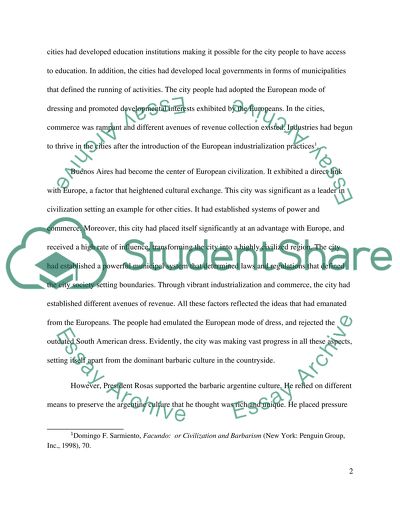Latin American History: Sarmiento Essay Example | Topics and Well Written Essays - 750 words. Retrieved from https://studentshare.org/history/1482020-latin-american-history-sarmiento
Latin American History: Sarmiento Essay Example | Topics and Well Written Essays - 750 Words. https://studentshare.org/history/1482020-latin-american-history-sarmiento.


